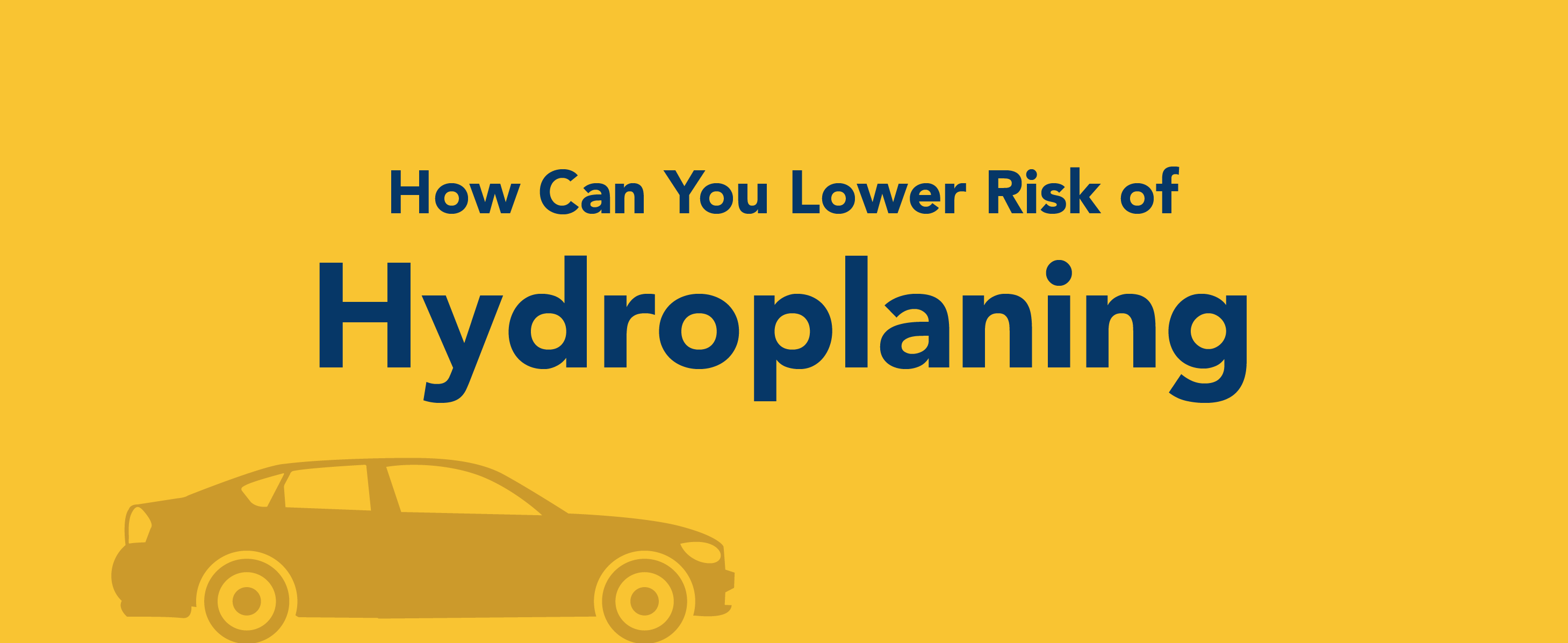
Hydroplaning — the word can be a bit scary for even the most experienced drivers. The event can occur with even the smallest amount of water accumulation and happens when your tires ride on the surface of standing water instead of the pavement. Hydroplaning specifically refers to a film of water that forms between the roadway and your tires, actually lifting the front wheels off the pavement and adversely affecting your ability to steer and brake. Although there are many variables that determine whether or not your vehicle will hydroplane, vehicles can hydroplane at even low speeds and as previously mentioned, with very little water on the road.
What Can You Do to Avoid Hydroplaning?
- Slow down.
Reduce your speed when weather conditions are not ideal. Going over 35 mph on wet roads will increase the likelihood of hydroplaning; however, multiple factors are at play. Vehicle weight, tire pressure, speed, amount of water accumulation on the road, etc. all factor into hydroplaning. - Maintain your maintenance schedule.
Your vehicle should be properly maintained and assessed for safety concerns. Make sure you balance, rotate and check air pressure of your tires on a regular basis. It is recommended to balance and rotate tires for every 7-10,000 miles. When tire pressure is low, you are more likely to experience hydroplaning. Play it safe and fill your tires to the manufacturer’s recommended psi. - Inspect your tires regularly.
This should especially be done when you live in areas that routinely see high rainfall or snow accumulation. Do not drive on bald tires or when tires have lost tread. Usually a professional technician will inform you when conducting other maintenance if your tires need replacement, but you should be checking the tread of your tires as well. - Do not use cruise control.
Do not use the cruise control function on your vehicle when it is actively raining or water has accumulated on the roads. It could cost you valuable reaction time if you were to hydroplane while it is activated. Don’t increase your chances of hydroplaning, it’s just not worth the risk. - Avoid standing water.
While not the easiest of tasks to spot at night, you should remain alert to puddles and standing water. A general rule of thumb is to scan ahead and anticipate where water might be accumulating. Does water appear to be in one lane more so than the other? Is water welling up on the shoulder of the road?
Is Aquaplaning and Hydroplaning the Same Thing?
Essentially, yes. Aquaplaning is the more commonly used term in Europe and Asia, while in the U.S. it is referred to as hydroplaning. This dynamic type of hydroplaning occurs when water literally lifts your wheels off the road. At this point, you are riding on the surface of the water with little to no control or traction.
Prepare for Poor Weather Conditions
When faced with driving is poor weather conditions, again, contemplate the risks involved and whether or not you can postpone the trip. Check weather radar to stay informed of evolving conditions, so you can plan ahead or wait it out. Calculate all risks involved and weight your options accordingly.
Interested in taking an adverse weather course with Top Driver? Click here to register! This refresher course is only $15, online and self-paced. You’ll learn about driving safety considerations in adverse weather, the importance of traction and weight shift in poor conditions, driving in rain, and driving in winter conditions.